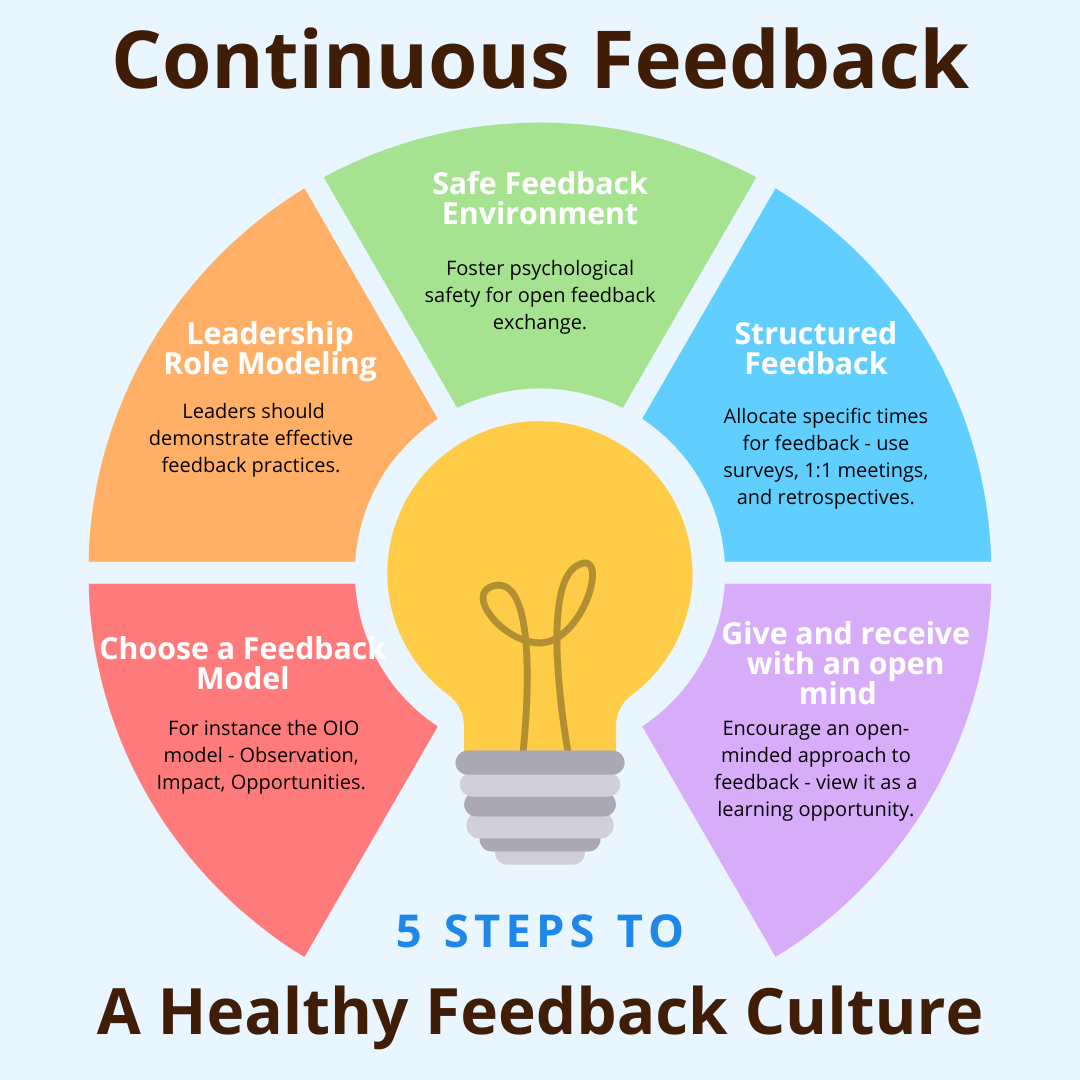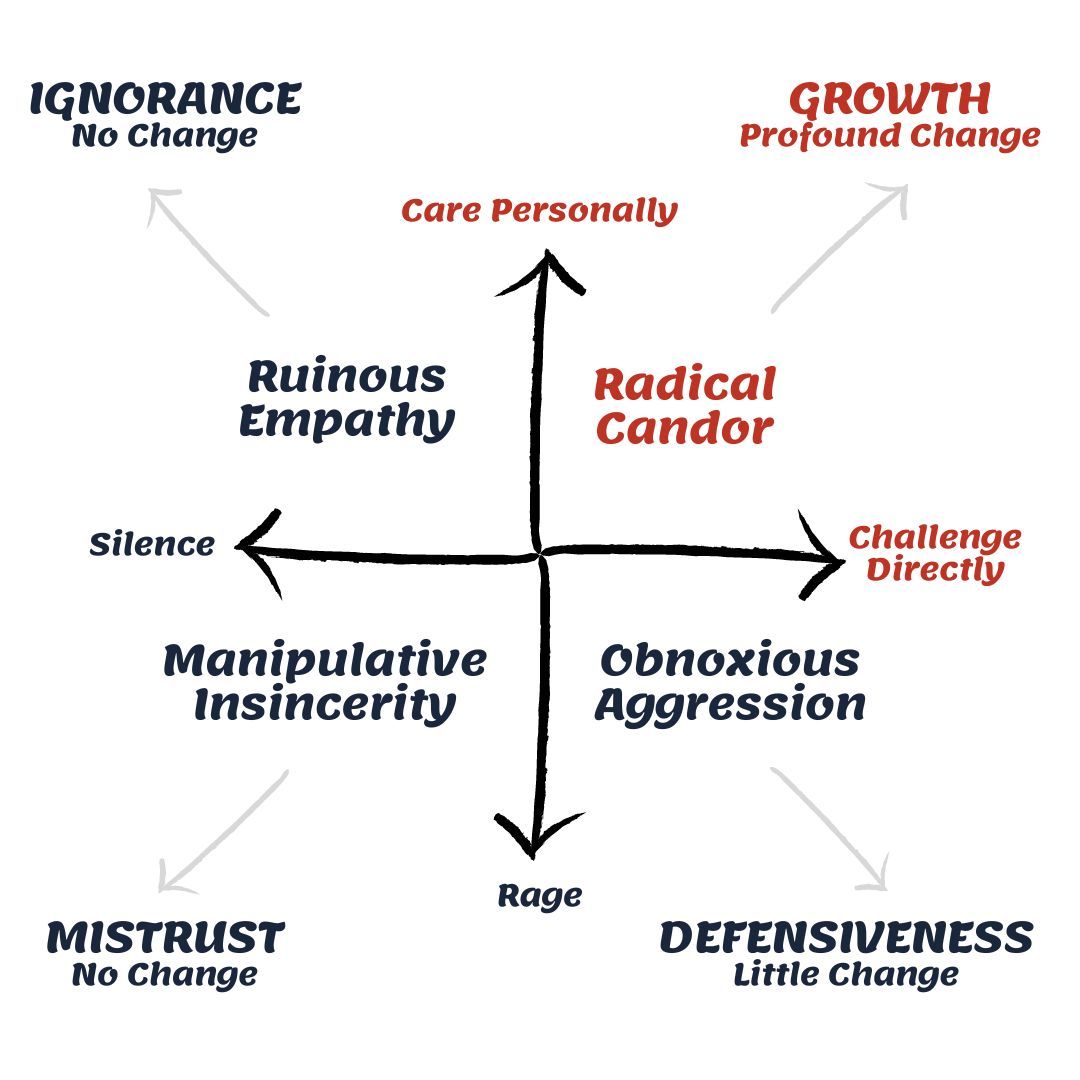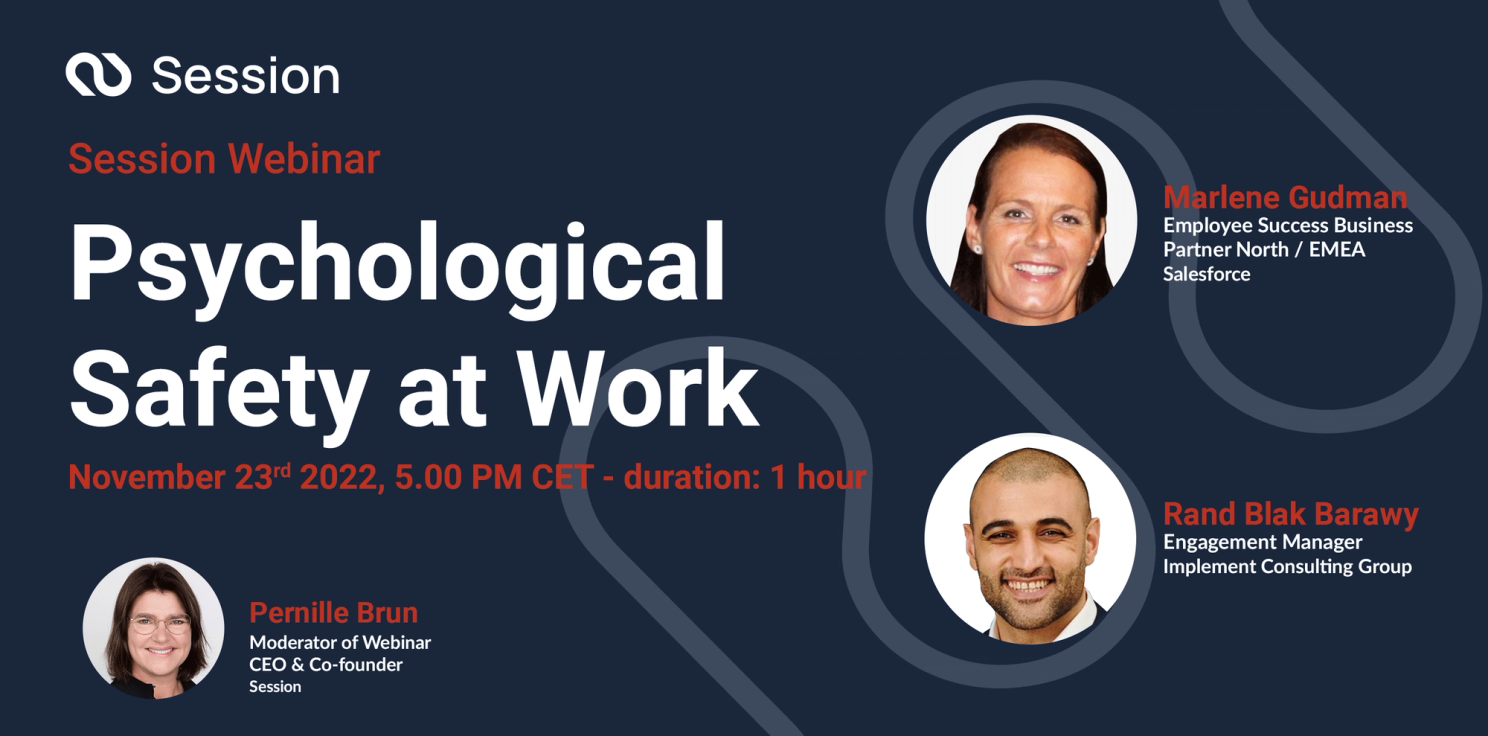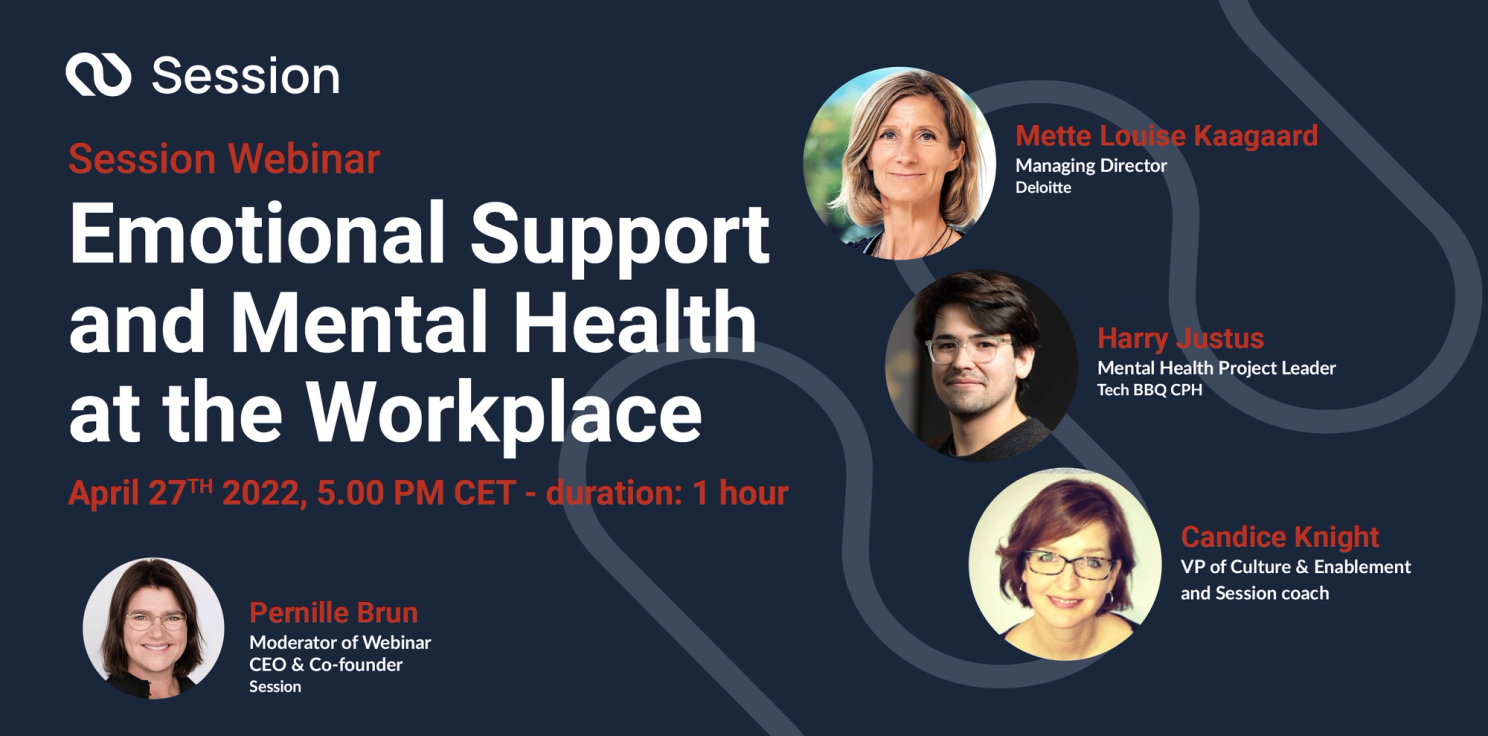It’s that time of year again: managers are gearing up to conduct annual performance evaluations, and employees are waiting with bated breath to see the results. But why is the weight of the world placed upon a single annual performance evaluation? In this article, I would like to outline the benefits of a far more effective feedback system: a culture of continuous feedback. When executed correctly, it can propel your teams to approach tasks from a new perspective and find creative solutions to business challenges. However, like most good things, feedback is not effective if it is not implemented on a continuous basis. Embedding a culture of continuous feedback into your workplace may seem like a daunting task, but it is critical. Designing a strong and consistent feedback culture isn’t something that just happens naturally; it’s intentional. In this article, I will walk you through the reasons why a culture of continuous feedback is so important, and give you practical tips on how to implement it within your organization.

What Exactly Is Feedback, And Why Do We Need It In The First Place?
First, let’s start with the definition of feedback, which can be defined as:
‘’Feedback is the art of communicating perceived information about an action, event, or process back to a person, a team or an organization in order for the action, event or process to become clearer, better or changed.’’
Providing feedback and receiving feedback is not always easy - but it enables us to learn and grow. As the expression goes “the eye cannot see itself” - therefore we need outside perspectives in order to see the full picture, experience clear insights, and avoid misconceptions and stories created by ourselves to judge others’ behaviors.
We can love or hate feedback - depending on whether it shines a positive light on our accolades, or brings our flaws and weaknesses to the forefront. Negative, or corrective feedback is particularly difficult for humans to both give and receive. A feature of human nature is for people to fixate much more on one small item of negativity than on an influx of positive feedback. Research conducted by Dr. Martin Paulus, an Adjunct Professor of Psychiatry at the University of California, San Diego, shows the reason we respond so poorly to negative feedback is because of our brain’s amygdala, which plays a major role in our fight or flight response. So, that gut-wrenching, palm-sweating feeling you get when receiving corrective feedback is hardwired into your brain.
Ultimately, feedback signifies whether our work is effective or if it needs improvement, and helps us better our processes, way of working, teamwork, customer support and more. Humans are essentially creatures of habit, and we continue with our habits - even if we consciously recognize that they are unproductive, to our detriment - and potentially to the detriment of our team and organization. It is therefore imperative that we gain an outside perspective on our habits, behaviors, and any potential roadblocks that may be hindering progress and growth.
It is also essential that we get feedback on our products - the things we produce or offer that we think are of value to other people. Without feedback on these matters, we can find ourselves producing things no one wants or values in the long run, and we also risk missing out on great ideas for improvements of the product. The same counts for us as human beings - without feedback, we miss out on other’s perspectives and ultimately, on great learning opportunities. There are a number of practices that can make the process of receiving and giving feedback less nerve-inducing. I will discuss these throughout the upcoming sections.
Praise for Positive Feedback
A common misconception exists: feedback should only be about correcting behavior or changing things. This is not the case, nor should it be. A great feedback culture is a culture in which you also recognize and acknowledge the good you see in other people, processes, and your team - and do so on a continuous basis. In the Forbes article, ‘In Praise of Positive Feedback’ author Alisha Cohn points to a number of benefits that positive feedback can elicit: it helps employees feel confident and more appreciated, which helps them do a better job. In turn, positive feedback builds trust, high morale and loyalty, all of which lead to stronger retention. It also allows for people to give – and for them to take in – corrective feedback more easily, because people get used to hearing positive things, too, leading to more positive associations to feedback in general. By giving positive feedback, colleagues are demonstrating that they are an ally, and looking out for the individual and team best interests. A way to nurture a culture of positive feedback is to remind, encourage, and train leaders to announce when things go well and to ask everyone to share what they find their colleagues are contributing with on a regular basis.
Positive feedback is essential to build into the continuous feedback culture practice, so that feedback will be associated not only with negative things, but with learning opportunities as well as opportunities to discover what is working well. One thing to be mindful of, though, is to NOT use the sandwich model, which happens when you ‘’sandwich’’ the negative feedback between two pieces of positive feedback. As I previously mentioned, it’s crucial to give positive feedback, but saving it to offset negative feedback delays the value of the positive feedback. This can turn employees cynical - as when they receive positive praise, they automatically assume that the negative feedback sandwich is on its way.
Fostering A Culture Of Continuous Feedback
As I touched upon at the beginning of the article, feedback is likely to be discouraging and uninspiring if it only occurs on a quarterly, or yearly basis. There simply is no substitute for feedback that occurs on a regular basis, and annual feedback can be a major deterrent to progress and motivation. Both employees and managers complain about annual performance feedback: employees have complained of biases and a sense of disconnection, while managers point to annual performance evaluations as nothing more than a bureaucratic, box-checking exercise.
On the other hand, continuous feedback which is timely, tailored, concrete, and specific. It can engender meaningful and long-lasting results. For example, Gallup has found that when managers provide weekly (vs. annual) feedback, team members are:
- x 5.2 more likely to strongly agree that they receive meaningful feedback
- x 3.2 more likely to strongly agree they are motivated to do outstanding work
- x 2.7 more likely to be engaged at work
Instead of waiting to offload your corrective criticism or shower positive praise at the annual performance meeting, a much healthier - and more proactive approach - is to adhere to a continuous feedback loop. Remember, a healthy feedback culture is one where feedback is the norm rather than a signal that something is wrong. This means that when improvements are required, asking for change won’t come off as abrupt or aggressive. Instead, employees will be empowered to act and implement changes accordingly - without the shock factor that comes with out-of-the-blue feedback.
How To Provide Constructive Feedback
Now that we have looked at the benefits of creating a culture of continuous feedback, let’s look at how you can implement - and receive - feedback in a constructive manner at the individual and team level. Here are the fundamentals to providing constructive feedback. It should be:
- Timely: Ensure that the receiver/the team is ready to get the feedback, and isn’t shocked when it comes their way. You can preface any feedback by posing a question such as: ‘“I have some ideas for how to improve things - when would you have time to discuss them?”.
Also, ensure that the feedback given is timely in the sense that it is given often - so that the receiver can still remember the incident, meeting, product you are giving feedback on. Building a continuous feedback culture helps you here!
- Concise: Feedback should be kept short and to the point. If you go off on too much of a tangent, the meaning of your message can get lost.
- Concrete and specific: Rather than relying on vague or misconstrued beliefs, concentrate on concrete examples of what the person or the team is doing well, and suggestions for what could be improved. For example, you could bring up a recent presentation that they did: ‘’I loved how detail-oriented and factual your presentation was, and I could really see how much effort you put into your slides. I also noticed that you seemed uncomfortable articulating your points in public. Is this also how you experienced it?”
- Future-oriented: Bringing up past grievances is not productive, and can incite feelings of resentfulness. Instead of focusing on the past, be future-orientated: What should the employee/the team continue doing, and what should they stop doing moving forward?
- Open - leaving room for dialogue: The receiver should always be able to ask questions, and explain their thoughts. Great feedback givers end with a question: ‘’This is how I see it, what do you think? What is your perspective?’’ When opening up the floor for dialogue, you are showing that there is an opportunity for joint problem-solving and collaboration to take place as well as showing how things can be experienced, interpreted and understood in different ways.
- Caring: Giving corrective feedback in public can lead to humiliation and hurt, so make sure to take this into consideration throughout the feedback process and ensure that the feedback given stems from good intentions and comes from a place of care. This does not necessarily mean, though, that you should live by the rule “Praise in public - critize in private”. A genuinely great feedback culture is characterized by the ability to also call it out when someone is not living the values, doing what they should do or breaking some rules - and calling it out also when others hear it. This may in fact be good for the morale of the team. Again, by creating a continuous feedback culture, you ensure that people speak up also when things are not working well - a cornerstone in psychological safety.
5 Concrete Steps to Create a Culture of Continuous Feedback
Now that we have looked at how to provide feedback, let's explore the best way to create a continuous feedback culture within your organization. This is best done by providing training and resources to empower people in the organization to both receive, and give effective feedback on a continuous basis. Both giving and receiving feedback are skills. Like any skill, they must be nurtured and practiced regularly. Here are some steps you can take to implement a continuous feedback culture:
- Choose a feedback model, for instance the OIO model. OIO stands for observation, impact, and opportunities:
- Observation: What do I think you/we do really well? What do I like about the way you/we work and the way we collaborate? Where do I see room for improvement?
- Impact: What impact did the way you/we handled the situation have?
- Opportunities: What opportunities do I see you/we having in terms of handling situations even better in the future? What should you/we continue doing, try out, start doing or do different?
- Let leaders walk the talk: When employees see leaders model strong feedback practices, they're more likely to emulate this behavior. Leaders must hone their ability to give and receive feedback. It’s essential that leaders practice humility - and are open to receiving feedback from all angles. If you truly want to create a culture of continuous feedback, start by offering training to the top management. They might think they do not need it - but they do! Research shows that leaders at the top are the ones receiving the least feedback, yet they need it just as much!
- Create a feedback-safe environment: Effective feedback won’t take place in a hostile or intimidating environment. Employees need to feel psychologically safe and know that if they give honest feedback they won’t face negative repercussions. This starts with building trusting relationships in which employees can be themselves and speak up when problems arise. It is also built up by establishing the fact that giving feedback is ALSO about recognizing the positives, achievements, and wins.
- Structure feedback: Instead of just expecting feedback to take place naturally, structure and allocate specific time slots for feedback to take place. Although feedback can, and should, take place naturally - such as casual conversations at the coffee machine, feedback can also take place through the means of 360 surveys, 1:1 meetings, and retrospective meetings post-project.
- Teach non-defensiveness: Teach people to resist the impulse to be defensive and instead, start to view feedback as a gift that will help us learn and grow. Staying open-minded and non-defensive takes place once the feedback-safe environment has been established - but even then, it is something we need to remind ourselves about. Tips for this can be to remind everyone that feedback given is ONE perspective - you can most likely learn from this perspective, but you do not need to spend hours over-analyzing every word. Even if you do not agree with the feedback given, staying open and non-defensive will enable learning to take place.
The Radical Candor Model - What's It All About?
The last thing I would like to touch upon in this article, is the art of practicing feedback as explained by Kim Scott, who in her early management years did her share of mistakes of not giving regular feedback. Radical Candor by Kim Scott is a management philosophy based on caring personally while challenging others directly. In her book, Radical Candor: Be A Kick-Ass Boss Without Losing Your Humanity, Kim Scott outlines how it is possible to give and receive very direct or - ‘’radically candid’’ feedback - if you approach giving feedback as demonstrating care. By not giving feedback - you show a lack of care - it is just as bad as ignoring the other person, as you are depriving them of opportunities for development and growth. If you start looking at giving feedback in this way - by looking at it as a gift given to another person or a gift you receive - it becomes easier to both give and receive feedback.
The concept of Radical Candor runs on a quadrant axis, which includes: Radical Candor, Obnoxious Aggression, Ruinous Empathy, and Manipulative Insincerity.

Kim explains how we can easily slip into one of the least desirable quadrants through our feedback approach:
- Ruinous Empathy: This occurs when you score high on ‘care personally’, and low on ‘challenge directly’. It’s what you do when you ‘’just want to be nice’’. This leads to poor outcomes. As Kim Scott outlines in her book, ruinous empathy led her to firing a ‘’nice guy’’ employee, because she couldn’t bring herself to be honest with him and tell him that he was underperforming. Kim Scott explains how empathy can ironically be destructive, because sometimes, corrective feedback is a moral obligation.
- Manipulative Insincerity: This happens when you score low on ‘care personally’ and low on ‘challenge directly’. This occurs when you say things you don’t mean to get someone out of your hair. For example, a colleague that you manage did badly on her sales presentation, but you don’t like her, so you tell her that she ‘did a good job’ in order to go back to your own work and not have to deal with the problem directly.
- Obnoxious Aggression: Low on ‘care personally’, high on ‘challenge directly’ - this means you are treating others poorly, and being downright mean in your approach to delivering feedback.
When your guidance includes both praise and criticism, eliciting constructive feedback but also highlighting wins, this can be described as Radical Candor - the ultimate goal to feedback, which fits nicely into creating a culture of continuous feedback.
However, one issue I would like to raise about Radical Candor is the suggestion that 100% honesty is required for giving feedback. I disagree with this approach - as I believe it lacks tactfulness. It is possible to give feedback that is direct and honest, but also includes the appropriate levels of tact and diplomacy.
Conclusion
Prioritizing and fostering a culture of continuous feedback is not just important - it is vital. Remember, feedback requires a delicate balance of both constructiveness AND praise. Not providing someone with feedback because you are afraid of hurting their feelings - is actually causing more harm than good. On the other hand, constantly providing feedback that is corrective, can result in the individual or team feeling demoralized and undervalued. Aim to strike a delicate balance that encompasses both corrective and positive feedback. Ensure that feedback is carried out in a meaningful way: create a feedback safe environment where employees feel psychologically safe, allow for time to reflect and ask questions, and practice and teach non-defensiveness. Although implementing a model of continuous feedback requires significant time and training, the benefits that it provides are well worth the investment - for employees, teams, and whole organizations.











